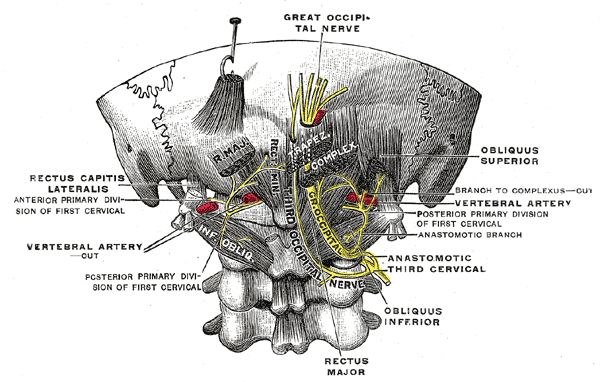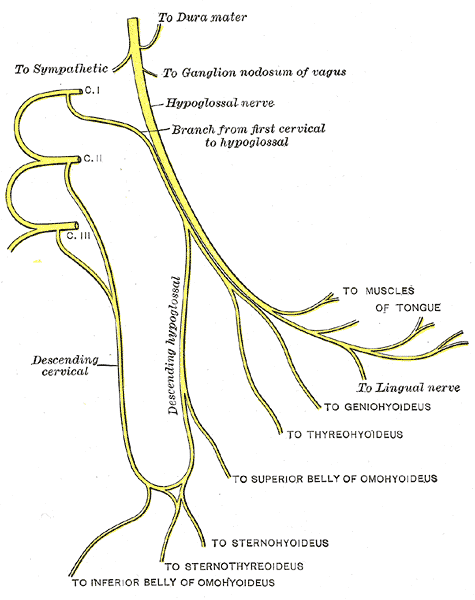[1]
Lee JH, Cheng KL, Choi YJ, Baek JH. High-resolution Imaging of Neural Anatomy and Pathology of the Neck. Korean journal of radiology. 2017 Jan-Feb:18(1):180-193. doi: 10.3348/kjr.2017.18.1.180. Epub 2017 Jan 5
[PubMed PMID: 28096728]
[2]
Sakellariou VI, Badilas NK, Mazis GA, Stavropoulos NA, Kotoulas HK, Kyriakopoulos S, Tagkalegkas I, Sofianos IP. Brachial plexus injuries in adults: evaluation and diagnostic approach. ISRN orthopedics. 2014:2014():726103. doi: 10.1155/2014/726103. Epub 2014 Feb 9
[PubMed PMID: 24967130]
[3]
Lee MW, McPhee RW, Stringer MD. An evidence-based approach to human dermatomes. Clinical anatomy (New York, N.Y.). 2008 Jul:21(5):363-73. doi: 10.1002/ca.20636. Epub
[PubMed PMID: 18470936]
[4]
Leijnse JN, D'Herde K. Revisiting the segmental organization of the human spinal cord. Journal of anatomy. 2016 Sep:229(3):384-93. doi: 10.1111/joa.12493. Epub 2016 May 12
[PubMed PMID: 27173936]
[5]
Orebaugh SL, Williams BA. Brachial plexus anatomy: normal and variant. TheScientificWorldJournal. 2009 Apr 28:9():300-12. doi: 10.1100/tsw.2009.39. Epub 2009 Apr 28
[PubMed PMID: 19412559]
[6]
Mansukhani KA. Electrodiagnosis in traumatic brachial plexus injury. Annals of Indian Academy of Neurology. 2013 Jan:16(1):19-25. doi: 10.4103/0972-2327.107682. Epub
[PubMed PMID: 23661958]
[7]
Kim JS, Ko JS, Bang S, Kim H, Lee SY. Cervical plexus block. Korean journal of anesthesiology. 2018 Aug:71(4):274-288. doi: 10.4097/kja.d.18.00143. Epub 2018 Jul 4
[PubMed PMID: 29969890]
[8]
Costa MMB. NEURAL CONTROL OF SWALLOWING. Arquivos de gastroenterologia. 2018 Nov:55Suppl 1(Suppl 1):61-75. doi: 10.1590/S0004-2803.201800000-45. Epub 2018 Aug 23
[PubMed PMID: 30156597]
[9]
Kubin L. Neural Control of the Upper Airway: Respiratory and State-Dependent Mechanisms. Comprehensive Physiology. 2016 Sep 15:6(4):1801-1850. doi: 10.1002/cphy.c160002. Epub 2016 Sep 15
[PubMed PMID: 27783860]
[10]
Banneheka S. Anatomy of the ansa cervicalis: nerve fiber analysis. Anatomical science international. 2008 Jun:83(2):61-7. doi: 10.1111/j.1447-073X.2007.00202.x. Epub
[PubMed PMID: 18507614]
[11]
Iwanaga J, Fisahn C, Alonso F, DiLorenzo D, Grunert P, Kline MT, Watanabe K, Oskouian RJ, Spinner RJ, Tubbs RS. Microsurgical Anatomy of the Hypoglossal and C1 Nerves: Description of a Previously Undescribed Branch to the Atlanto-Occipital Joint. World neurosurgery. 2017 Apr:100():590-593. doi: 10.1016/j.wneu.2017.01.038. Epub 2017 Jan 19
[PubMed PMID: 28109859]
[12]
Zhang XY, Ma TT, Liu L, Yin NB, Zhao ZM. Anatomic study of the musculus longus capitis flap. Surgical and radiologic anatomy : SRA. 2017 Mar:39(3):271-279. doi: 10.1007/s00276-016-1708-8. Epub 2016 Jun 11
[PubMed PMID: 27289229]
[13]
Gavid M,Mayaud A,Timochenko A,Asanau A,Prades JM, Topographical and functional anatomy of trapezius muscle innervation by spinal accessory nerve and C2 to C4 nerves of cervical plexus. Surgical and radiologic anatomy : SRA. 2016 Oct;
[PubMed PMID: 26957148]
[14]
Kaplan PE. Electrodiagnostic confirmation of long thoracic nerve palsy. Journal of neurology, neurosurgery, and psychiatry. 1980 Jan:43(1):50-2
[PubMed PMID: 7354356]
[15]
Mitsuoka K, Kikutani T, Sato I. Morphological relationship between the superior cervical ganglion and cervical nerves in Japanese cadaver donors. Brain and behavior. 2017 Feb:7(2):e00619. doi: 10.1002/brb3.619. Epub 2016 Dec 29
[PubMed PMID: 28239529]
[17]
Simoni P, Ghassemi M, Le VD, Boitsios G. Ultrasound of the Normal Brachial Plexus. Journal of the Belgian Society of Radiology. 2017 Dec 16:101(Suppl 2):20. doi: 10.5334/jbr-btr.1418. Epub 2017 Dec 16
[PubMed PMID: 30498809]
[18]
Lee HY, Chung IH, Sir WS, Kang HS, Lee HS, Ko JS, Lee MS, Park SS. Variations of the ventral rami of the brachial plexus. Journal of Korean medical science. 1992 Mar:7(1):19-24
[PubMed PMID: 1418758]
[20]
Bayot ML, Nassereddin A, Varacallo M. Anatomy, Shoulder and Upper Limb, Brachial Plexus. StatPearls. 2023 Jan:():
[PubMed PMID: 29763192]
[21]
Hughes DS, Keynes RJ, Tannahill D. Extensive molecular differences between anterior- and posterior-half-sclerotomes underlie somite polarity and spinal nerve segmentation. BMC developmental biology. 2009 May 22:9():30. doi: 10.1186/1471-213X-9-30. Epub 2009 May 22
[PubMed PMID: 19463158]
[22]
Chakravorty BG. Arterial supply of the cervical spinal cord and its relation to the cervical myelopathy in spondylosis. Annals of the Royal College of Surgeons of England. 1969 Oct:45(4):232-51
[PubMed PMID: 4980920]


